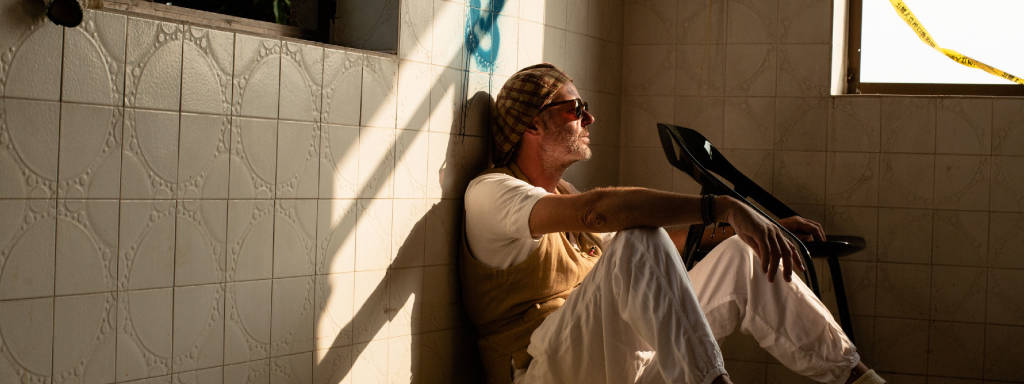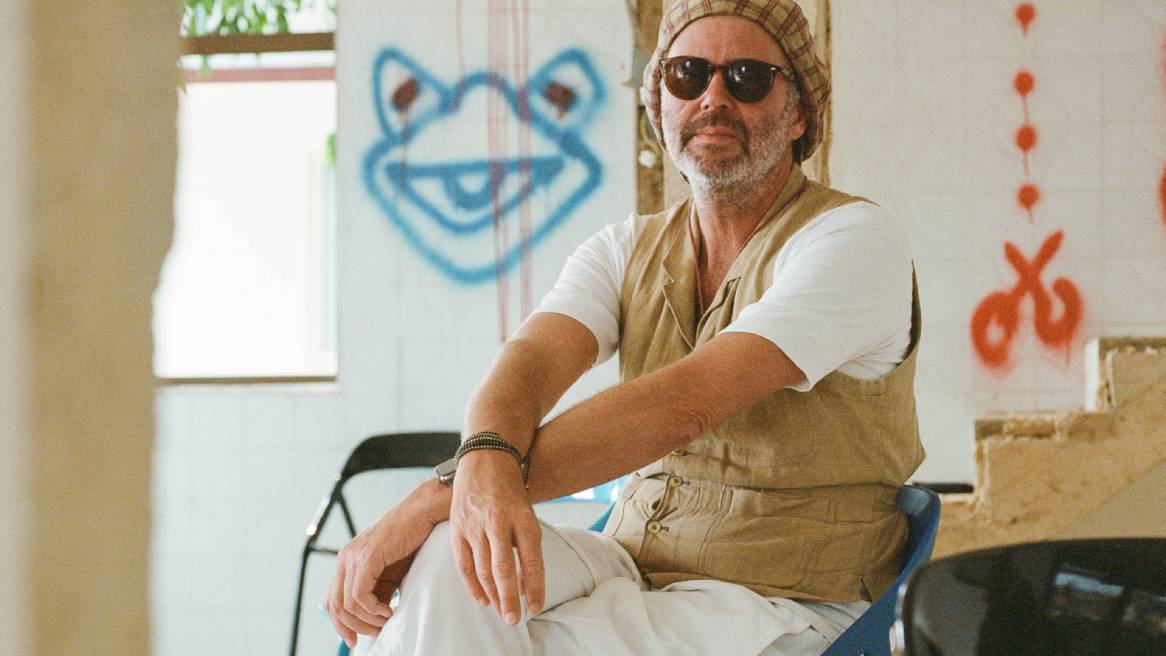A Conversation with Michael Young
In this inaugural In The Creative Chair conversations series, architecture and design author and writer Catherine Shaw uncovers Hong Kong-based British industrial designer Michael Young’s predilection for World War II socks, and finds out why he created a vase designed to kill flowers.
Michael’s innovative work covers a broad and eclectic spectrum from interiors and spatial design to technology. He has won multiple awards including the 2019 Red Dot Design Award for his carbon fibre LessThanFive Chair, a collaboration between Coalesse, a Steelcase brand.
Let’s start on a personal note. Do you have a personal signifier?
I don’t have a single signifier, but I like heritage and things that have a multi-dimensional reason for existing – and I live for the depth of textures. I never dress for anyone or with anything in mind. I search for things with integrity, like my small pin brooch that was designed to commemorate soldiers who died in the Second World War. My favourite Harris Tweed jacket is 20 years old, and only 100 were made. My socks were originally designed by Merz b. Schwanen for the German army in the Second World War, and my underpants were originally designed for the Swedish army.
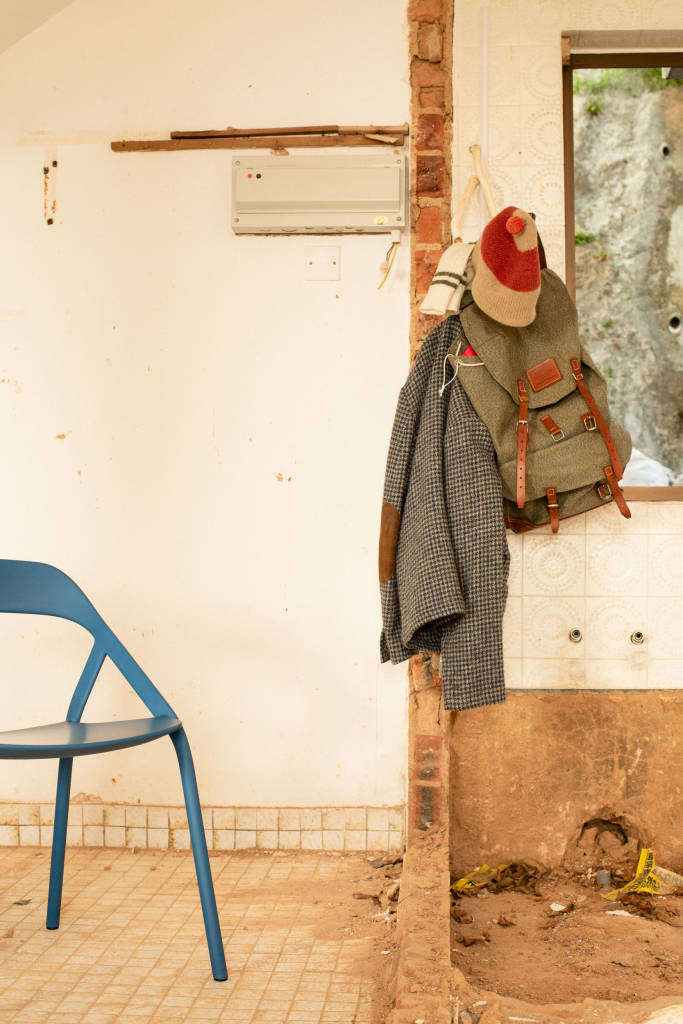
I hear you enjoy collecting?
You name it, I’ve got it – from samurai armour and Lakota Sioux headdress to a lot of stuff relating to climbing Everest. I’ve even got steering wheels. I also collect a lot of stuff from manufactum.com I have just bought 200 wooden clothes pegs.
What makes your collection what it is?
The process it has gone through to get there. It is not just about the form or the silhouette – it is the age and the making of it.
You’ve been in Hong Kong since 2006, but is London still home?
I have to be somewhere that has a context. If I don’t have that I get lost and I have to create a new one. We recently bought and are renovating a house and a smaller cottage on the beach on Lamma Island and it has been a sanity saver during the pandemic.
Whenever I travel to London I like to go to the Coach and Horses pub in Soho and buy a newspaper and that’s when I can say okay, I’m home. I miss British pubs a lot because they were part of my upbringing. It’s difficult to find a real pub outside the United Kingdom, but the other day, we went to the Lamma Grill and played scrabble for a few hours. I had a pint of Guinness and thought it was as close as I could get to Yorkshire.
That’s interesting, especially since you recently launched a Michael Young beer.
That is a funny story. I was doing a show and opened a studio in Shenzhen and my neighbours happened to be a packaging company for alcohol brands. They suggested we make our own beer and so we did. I designed the tin and also the drinking glass.
Has this year given you time to do something different?
We’ve been undertaking some design investigations for the sake of them, and it has been interesting to see how they have become seeds for the future. At one time I wondered what I was doing spending so much money on design like an electric boat to replace Hong Kong ferries without a client in this climate, but then I got in touch with the V&A in Shenzhen and suggested that we do a show of all this experimental stuff and they agreed. Our manufacturer said they would sponsor the show and all of a sudden we had an exhibition!
Favourite scent?
Damp grass. I have a garden about half the size of a football pitch at my house in Belgium, and the grass has such a beautiful smell that once I took all my clothes out and laid them on the grass, and when the sun came out, the fresh wet grass brought nature back into the clothes. A lot of the clothes were wool and natural fabrics made in Scotland so it felt right.
Favourite book?
World War II Told Through 100 Artifacts (War Told Through Artifacts) by Julian Thompson and Allan R Millett. I have a lot of books about things made in the Second World War. Everything had to be recreated for the battlefield with survival in mind. I am obsessed by how disruption in society always has a design response, because it usually creates a need for things that perform.
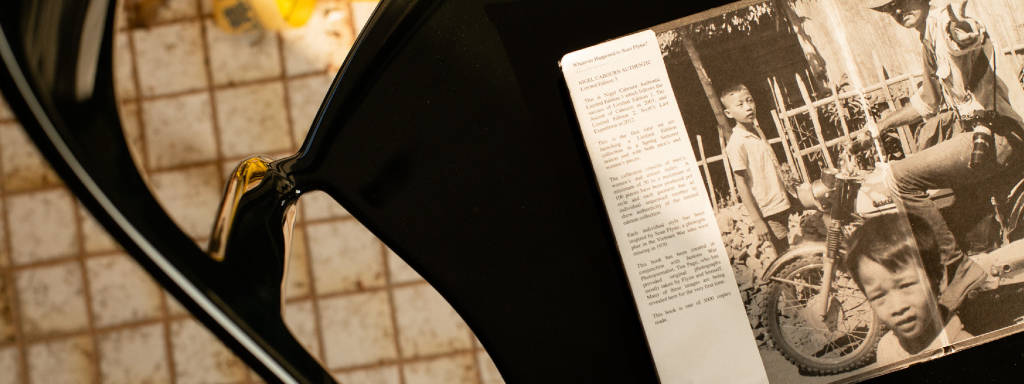
Favourite restaurant in Hong Kong?
Amigo. It has some culture and history, and they know how to make sauces. I like the floor too. And the downstairs bar, because they know how to make a real G&T there.
Whose opinion do you respect the most?
Look, it’s great when my mother says ‘That’s lovely, Michael!’ but it’s even better when it comes from someone I respect as a designer like Jasper Morrison, Philippe Stark or Matthew Hilton. It also means a lot when people like the artist Mariko Mori collect my things. Unfortunately, these days the media has become so advertorial and so curated that we don’t always get a critical view.
Artists that you like?
I am still into the American photographer Peter Beard and Basquiat. I am obsessed by that genre – the glamour of bohemia in the wild – but in the higher echelons of society with Basquiat from the rubble to the Ritz, I love the pull between the two extremes. I think that is where real art happens.
Do you have the same feeling for furniture?
No, there I am completely obsessed by modernity and most of my furniture is Danish. It is the process of design that I love. I’ve just designed a chair. It is a very experimental, modern take on the classic Chesterfield sofa and I’ve named it Sheffield. It is hemp horsehair and recycled leather.
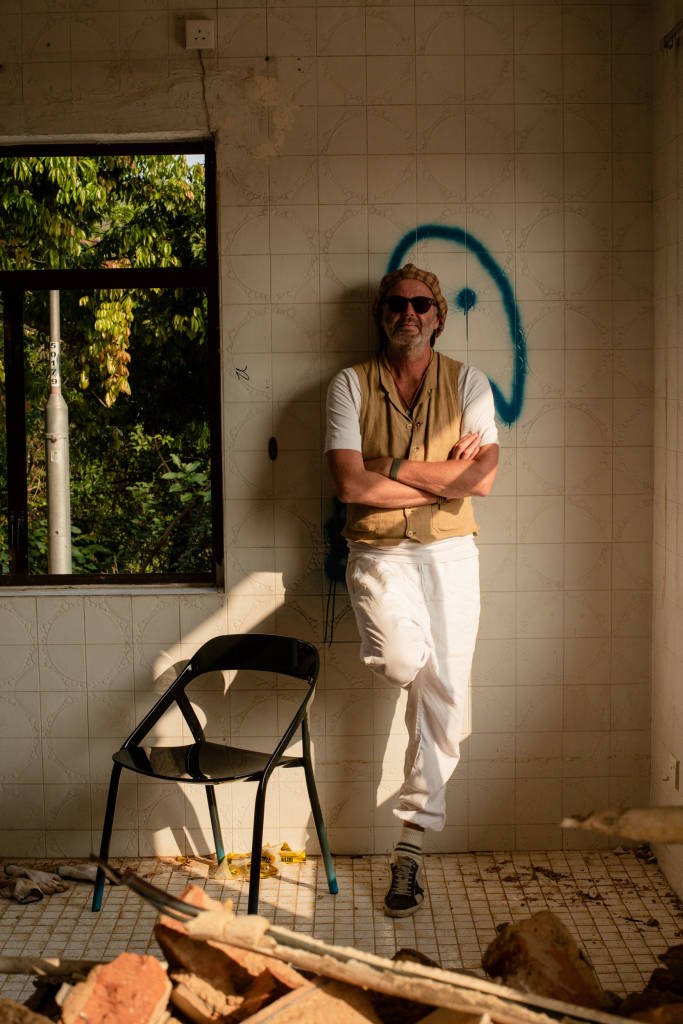
Best design advice ever given?
Don’t copy my mistakes, make your own – by Lemmy, the lead singer of Motörhead.
Most memorable commission?
For British artist Lucas Price. We are kindred spirits and when he asked me to make him a vase, I designed one – not for watering flowers, but for killing them. It is 3D printed resin and hangs from a rope so you can dry flowers. Lucas is someone I really respect as an artist because he is the real genuine blood and guts of art. He’s the real deal. It was a real honour.
What made the experience so memorable?
It wasn’t about money. It was about soul. And for someone who is on the same page as me creatively, so it means something as an object.
Product you wish you had designed?
The Jaguar E-Type. You can’t stop moving your eyes around it. The curves are endless. It’s like a piece of art and leaves a weird space in your head that you can’t understand.
Favourite view in the world?
It sounds silly, but I used to sit on the windowsill of my guest room at the Cerulean Tower in Shibuya, and I felt at home. I would just sit there and feel at peace.
